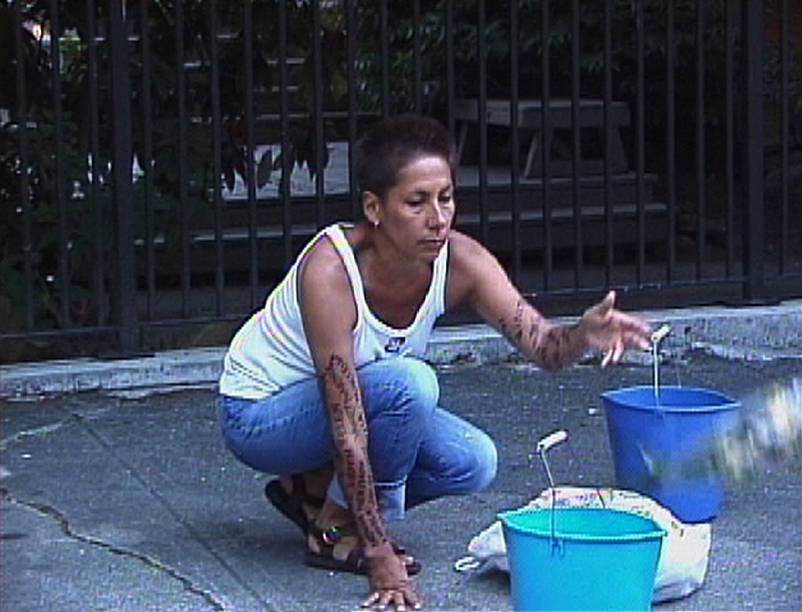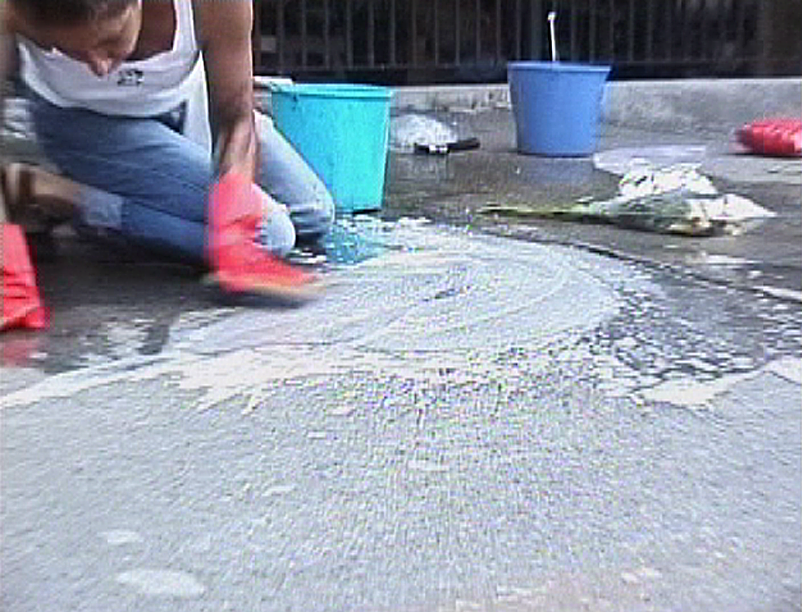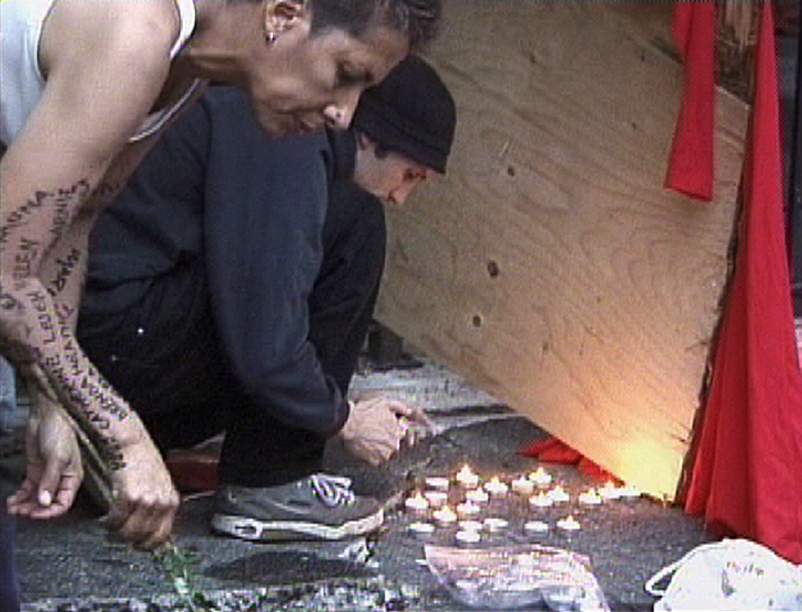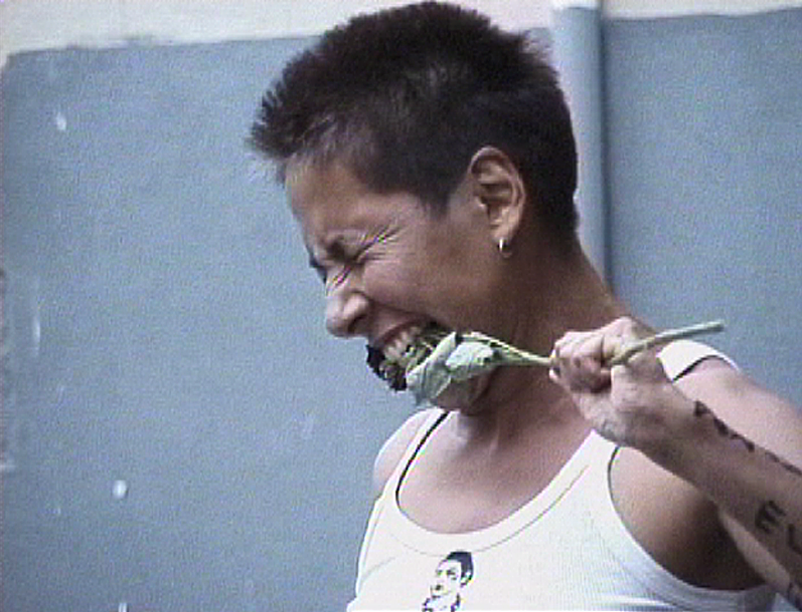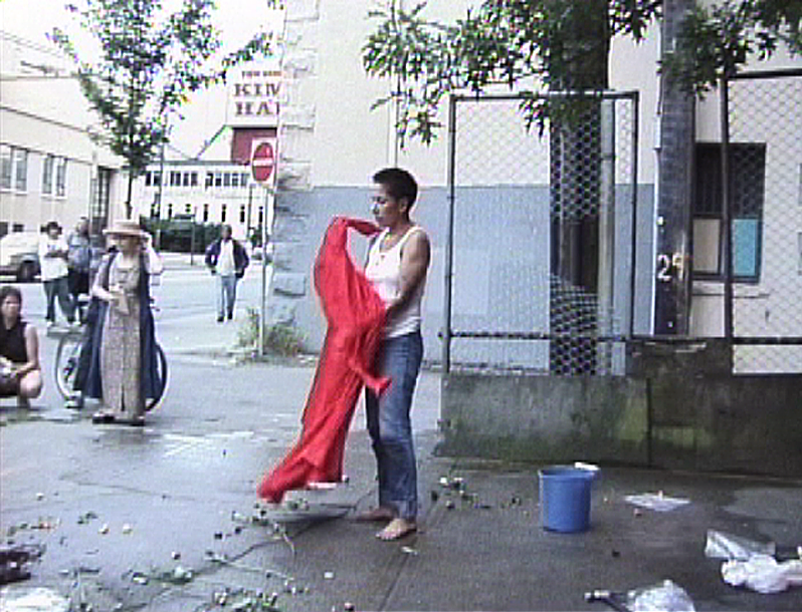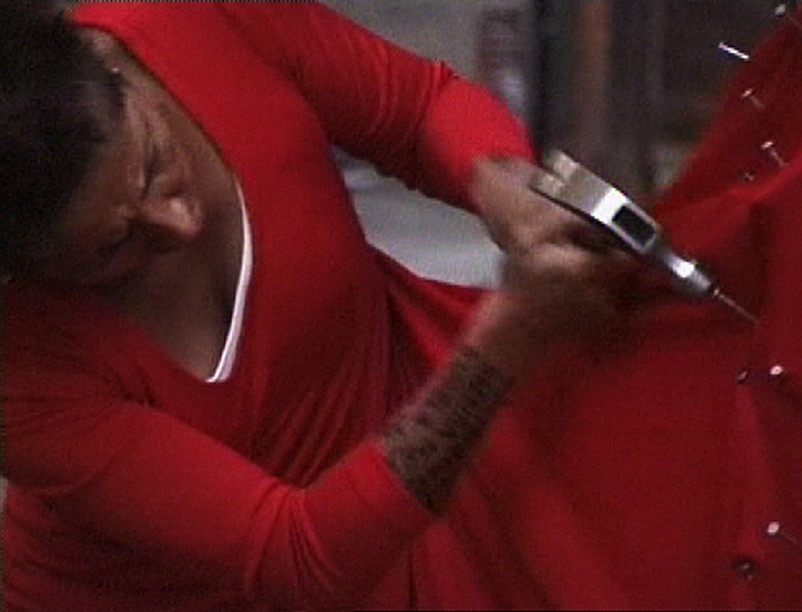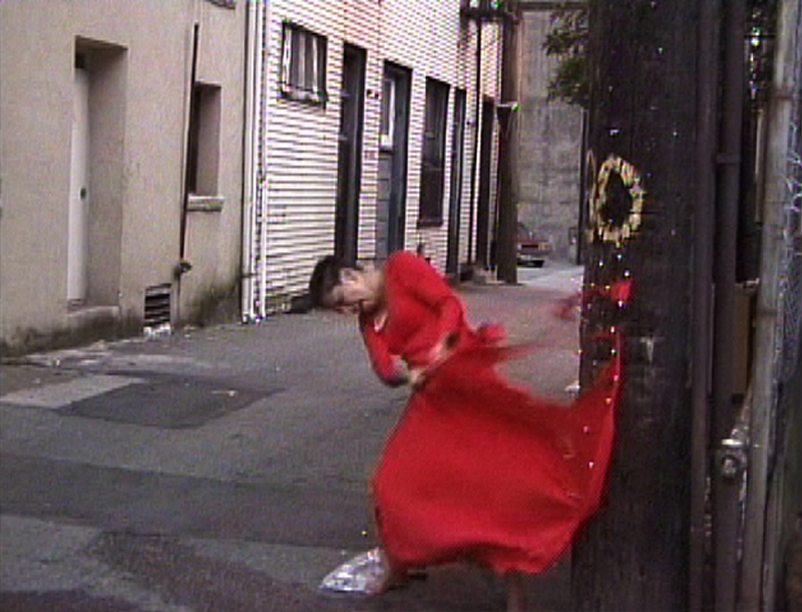Vigil, a performance at the corner of Gore and Cordova Streets on June 23, 2002, two of the tawdry streets that are common sites of abduction. The performance included all the elements of a classic ritual: establishing a bounded, liminal space, cleansing—a purification which puts the protagonist in a vulnerable or dangerous position, their body marked out in some way or identified by special clothing—endurance, repetitive action, release; a closing sequence with the returning to the ‘real’ world. In Vigil the women’s first names are written in black marker all over her arms as cues, prompting Belmore to yell them out at the top of her voice, and after each name to draw a rose, with its thorns, through her closed lips.
In the performance, crimes against the body, the native body, the woman’s body, are embodied in, enacted by, or inscribed on her own body, as if in an act of atonement. The names also draw attention to the fact that the kin-based, named, relationships of native communities were overlaid, where they were not replaced by the property relations of capitalism. Place names, plant names, people’s names—all overlaid, all changed. In closing, Belmore, now in jeans and t-shirt, leans up against a looming black pick-up truck, with all the male signifying options, that has been there all the time, parked at the periphery of her action. James Brown’s It’s a Man’s Man’s [Man’s] World booms magnificently out from the truck’s stereo:
“This is a man’s man’s [man’s] world / but it wouldn’t mean nothing, nothing / without a woman or a girl.”
Charlotte Townsend-Gault, Have We Ever Been Good?, The Named and the Unnamed, Morris and Helen Belkin Art Gallery, University of British Columbia, 2002
Video credit: Paul Wong
